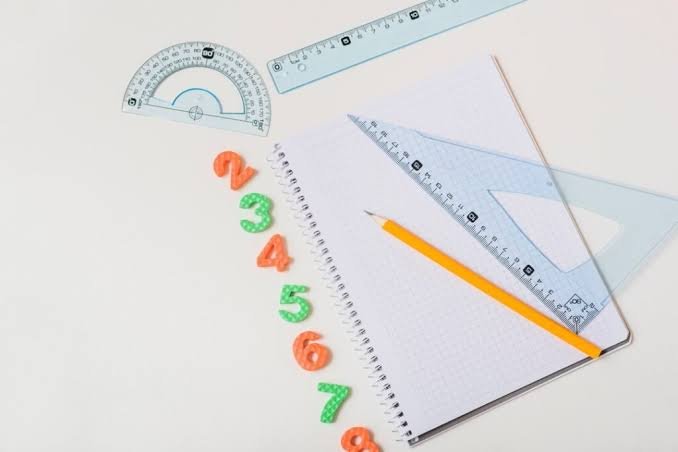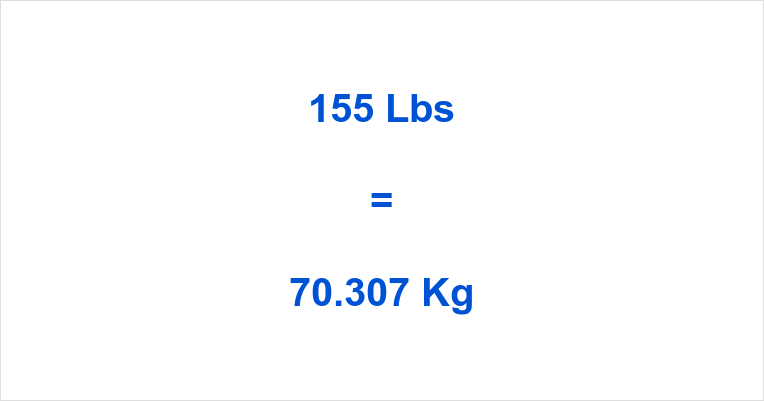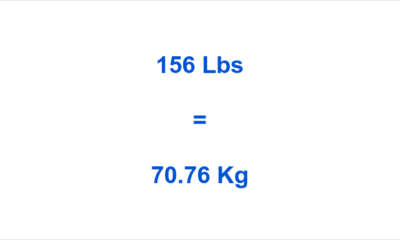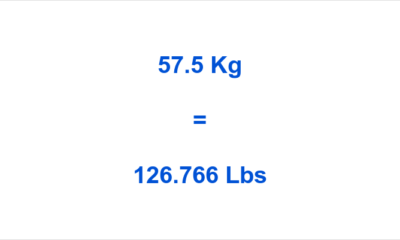Education
27.5 cm in Inches – A Simple Conversion Guide

Introduction
Ever found yourself trying to figure out how long 27.5 cm is in inches? Whether you’re shopping for shoes, measuring a new piece of furniture, or working on a school project, knowing how to convert centimeters to inches can be incredibly useful.
In this article, we’ll break down the conversion of 27.5 cm in inches, explain the formula, and give you some real-world examples to help you understand this measurement better. Let’s dive in!
How to Convert 27.5 cm to Inches
The Formula for Converting cm to Inches
The standard formula to convert centimeters to inches is: Inches=Centimeters×0.393701\text{Inches} = \text{Centimeters} \times 0.393701Inches=Centimeters×0.393701
Using this formula, let’s convert 27.5 cm: 27.5×0.393701=10.82678 inches27.5 \times 0.393701 = 10.82678 \text{ inches}27.5×0.393701=10.82678 inches
So, 27.5 cm is approximately 10.83 inches when rounded to two decimal places.
Why is This Conversion Important?
Understanding how to convert centimeters to inches can be useful in many situations, such as:
- Shopping for Shoes 🏀: If you’re buying shoes online and the size is in centimeters, you’ll need to convert it to inches to find the right fit.
- Furniture Measurements 📏: When dealing with furniture sizes from different countries, knowing how to convert can save you from buying something too big or too small.
- Crafts & DIY Projects 🛠️: Many craft instructions use inches, while rulers and materials may be labeled in centimeters.
- International Travel ✈️: Different countries use different measurement systems, so it’s always helpful to know conversions.
Real-Life Examples of 27.5 cm in Inches
To give you a better idea of what 27.5 cm (10.83 inches) looks like, here are some common objects of a similar size:
- A standard iPad 📱 – A regular iPad measures around 10.2 inches, which is slightly smaller than 27.5 cm.
- A sheet of A4 paper 📄 – The width of an A4 sheet is about 8.3 inches, so 27.5 cm is wider than an A4 page.
- A large dinner plate 🍽️ – Most dinner plates are around 10-12 inches, making 27.5 cm a great reference point.
- The height of a tall coffee mug ☕ – Many large coffee mugs are around 10-11 inches tall.
Quick cm to Inches Conversion Table
If you need to convert more sizes, here’s a quick reference table:
| Centimeters (cm) | Inches (in) |
|---|---|
| 10 cm | 3.94 in |
| 20 cm | 7.87 in |
| 27.5 cm | 10.83 in |
| 30 cm | 11.81 in |
| 50 cm | 19.69 in |
How to Convert cm to Inches Quickly Without a Calculator
If you don’t have a calculator handy, you can use a simple trick:
- Divide by 2.5: A rough estimate is that 1 inch is about 2.5 cm.
- Double the number and add a little more: For example, 27.5 cm ÷ 2.5 = 11 inches (a quick approximation).
Although this method isn’t 100% precise, it’s a great way to get a quick estimate.
Conclusion
Now that you know 27.5 cm is approximately 10.83 inches, you can confidently make conversions in everyday situations. Whether you’re shopping, measuring, or crafting, understanding these measurements makes life easier.
Need more conversions? Bookmark this guide so you can quickly refer back whenever you need to convert cm to inches!
FAQs
1. What is 27.5 cm in inches rounded to the nearest whole number?
27.5 cm is approximately 11 inches when rounded to the nearest whole number.
2. How many inches is 27.5 cm exactly?
The exact conversion is 10.82678 inches, which is often rounded to 10.83 inches.
3. How do I convert cm to inches manually?
Multiply the number in cm by 0.393701 or divide by 2.54 to get the inches equivalent.
4. Is 27.5 cm considered long?
It depends on the context! In footwear, 27.5 cm is roughly a US size 9.5-10 in men’s shoes, while in objects, it’s slightly shorter than an A4 paper’s height.
5. Can I use a ruler to measure 27.5 cm in inches?
Yes! If your ruler has inches and centimeters, just find 27.5 cm and check the corresponding inch mark.
Education
155lb to kg – Quick and Easy Weight Conversion Guide

Introduction
If you’ve ever come across a weight measurement in pounds and wondered how it translates to kilograms, you’re not alone. Whether you’re tracking your fitness progress, following a diet plan, or dealing with international weight conversions, knowing how to convert 155 pounds (lb) to kilograms (kg) can be extremely helpful.
In this guide, we’ll break down the conversion process, provide an easy formula, and explore why understanding different weight units matters. Let’s dive in!
155lb to kg – The Simple Conversion
The conversion formula from pounds to kilograms is: 1 lb=0.453592 kg1 \text{ lb} = 0.453592 \text{ kg}1 lb=0.453592 kg
So, to convert 155lb to kg: 155×0.453592=70.31 kg155 \times 0.453592 = 70.31 \text{ kg}155×0.453592=70.31 kg
Thus, 155 pounds is approximately 70.31 kilograms.
Why Convert Pounds to Kilograms?
Different countries use different measurement systems. While the United States primarily uses pounds, most of the world, including Europe and Asia, uses the metric system, which includes kilograms. Converting weights can help with:
- Fitness & Health: Many gym programs and weight loss plans use kilograms.
- Cooking & Nutrition: Some recipes list ingredients in metric measurements.
- Traveling & Shopping: Luggage weight limits at airports are often in kg.
- Science & Medicine: Medical reports and prescriptions may use metric units.
Understanding both systems can save you from confusion, especially when dealing with international standards.
Other Common Weight Conversions
Here’s a quick reference table for converting nearby weights:
| Pounds (lb) | Kilograms (kg) |
|---|---|
| 150 lb | 68.04 kg |
| 155 lb | 70.31 kg |
| 160 lb | 72.57 kg |
| 165 lb | 74.84 kg |
| 170 lb | 77.11 kg |
If you ever need to convert other values, simply multiply the number of pounds by 0.453592 to get the weight in kilograms.
How to Convert 155lb to kg Without a Calculator
If you don’t have a calculator handy, a rough estimation method is:
- Divide the weight in pounds by 2.2 155÷2.2≈70.45155 \div 2.2 \approx 70.45155÷2.2≈70.45
- This method gives a close approximation to the actual conversion of 70.31 kg.
While this isn’t perfect, it’s useful when you need a quick mental estimate.
Historical Background: Pounds vs. Kilograms
- Pounds (lb): Originated from the Roman “libra,” which was used as a standard weight unit.
- Kilograms (kg): The metric system was adopted in the late 18th century in France, and now, it’s the official weight unit in most countries.
The pound remains in use primarily in the US, the UK, and a few other places, while kilograms dominate international trade, science, and daily life in most parts of the world.
Fun Facts About Weight Conversion
- The International System of Units (SI) defines the kilogram based on a physical constant, making it the most accurate weight measurement.
- Your weight can slightly change throughout the day due to water intake, food consumption, and digestion.
- The heaviest human ever recorded, Jon Brower Minnoch, weighed 1,400 lb (635 kg)!
Conclusion
Now you know that 155lb to kg, along with useful tips on how to estimate weight conversions. Whether you’re working on your fitness goals, traveling, or simply curious, converting between pounds and kilograms is a handy skill.
FAQs
1. What is 155 lb in kg rounded to two decimal places?
155 lb is 70.31 kg when rounded to two decimal places.
2. How do I quickly convert pounds to kilograms?
Use the formula: Weight in pounds×0.453592=Weight in kg\text{Weight in pounds} \times 0.453592 = \text{Weight in kg}Weight in pounds×0.453592=Weight in kg
Or for a quick estimate, divide the weight by 2.2.
3. Is 155 lb a healthy weight?
It depends on factors like height, age, and body composition. Always check with a BMI calculator or a healthcare professional.
4. What is the easiest way to remember the conversion factor?
Remember that 1 pound ≈ 0.45 kg, so you can quickly estimate by halving the weight and adjusting slightly.
5. Why do some countries use pounds while others use kilograms?
The United States and a few other places still use pounds due to historical reasons, while most of the world adopted the metric system for consistency and ease of use.
Education
140 lbs to kg: Easy Conversion & Practical Guide

Introduction
Ever wondered how much 140 lbs is in kilograms? Whether you’re tracking your weight, following a fitness plan, or just curious about the metric system, knowing how to convert pounds to kilograms is useful. In this guide, we’ll break it down in an easy-to-understand way, provide practical examples, and answer some common questions.
By the end of this post, you’ll not only know the conversion but also understand why different measurement systems exist and how to apply this knowledge in daily life.
How to Convert 140 lbs to kg?
Converting pounds (lbs) to kilograms (kg) is simple. You just need to know the conversion formula: 1 lb=0.453592 kg1 \text{ lb} = 0.453592 \text{ kg}1 lb=0.453592 kg
So, to convert 140 lbs to kg: 140×0.453592=63.5 kg140 \times 0.453592 = 63.5 \text{ kg}140×0.453592=63.5 kg
Quick Answer:
140 lbs = 63.5 kg
Why Convert Pounds to Kilograms?
There are many reasons why you might need to convert pounds to kilograms:
- Traveling Abroad: Many countries use the metric system, so knowing your weight in kilograms can be useful.
- Fitness & Health: Many fitness and diet programs use kg instead of lbs.
- Science & Education: Many scientific calculations and academic studies use the metric system.
- Medical Reasons: Some medications and dosages are calculated based on weight in kilograms.
Quick Conversion Chart
| Pounds (lbs) | Kilograms (kg) |
|---|---|
| 100 lbs | 45.4 kg |
| 120 lbs | 54.4 kg |
| 140 lbs | 63.5 kg |
| 160 lbs | 72.6 kg |
| 180 lbs | 81.6 kg |
| 200 lbs | 90.7 kg |
If you need a different conversion, simply multiply your weight in pounds by 0.453592 to get kilograms.
Fun Facts About Weight Measurements
- Pounds vs. Kilograms: The pound (lb) is commonly used in the U.S. and some other countries, while the kilogram (kg) is part of the metric system and is used in most of the world.
- Metric System Dominance: Over 95% of the world uses the metric system.
- Why the Difference? The metric system was designed for simplicity and standardization, while pounds are based on older historical weight measurements.
Practical Uses of 140 lbs to kg
For Fitness & Weight Loss
If you’re tracking your weight for a fitness journey, knowing how to convert lbs to kg can help you compare progress across different systems.
For example:
- A person weighing 140 lbs (63.5 kg) can set a goal of reaching 60 kg (132 lbs) for a healthier lifestyle.
For Travel
When visiting countries that use kilograms, it’s helpful to know your weight in kg, especially if you’re checking luggage weight at the airport.
Example:
- Some airlines list baggage limits in kg (e.g., 23 kg limit). If you weigh 140 lbs (63.5 kg) and your luggage is 20 kg, you can calculate the total weight easily.
FAQs About 140 lbs to kg
1. What is 140 lbs in kg exactly?
140 lbs is exactly 63.5 kg when rounded to one decimal place.
2. How do I quickly convert pounds to kilograms?
Multiply your weight in pounds by 0.453592 to get kilograms.
3. Is 140 lbs a healthy weight?
It depends on your height, body composition, and fitness goals. A BMI (Body Mass Index) calculator can help determine if 140 lbs is a healthy weight for your height.
4. Why does the U.S. still use pounds instead of kilograms?
The U.S. primarily uses the imperial system due to historical reasons. However, the metric system is widely used in science, medicine, and global trade.
5. Is 140 lbs heavy in kilograms?
140 lbs equals 63.5 kg, which is a moderate weight depending on height and build.
Conclusion
Now you know that 140 lbs to kg, and how to make quick conversions between pounds and kilograms. Whether you’re tracking your weight, traveling, or studying, this knowledge can come in handy.
If you found this guide useful, share it with friends or bookmark it for future reference. Happy converting!
Education
72 Inches in Feet: A Simple Conversion Guide

Introduction
Have you ever come across a measurement in inches and needed to quickly convert it to feet? Understanding these conversions is essential, whether you’re working on a home improvement project, buying furniture, or just satisfying your curiosity. In this post, we’ll break down the simple conversion of 72 inches in feet, explain why it’s important, and provide some practical examples to help you grasp the concept better.
By the end of this guide, you’ll not only know how to convert inches to feet but also understand how this knowledge can be useful in everyday situations. Let’s dive in!
How to Convert 72 Inches to Feet
The conversion between inches and feet is straightforward:
- 1 foot = 12 inches
- To convert inches to feet, you divide the number of inches by 12.
Now, let’s apply this to 72 inches: 72÷12=672 \div 12 = 672÷12=6
So, 72 inches is equal to 6 feet.
Why is This Conversion Useful?
Understanding how to convert inches to feet can be handy in various real-life scenarios. Here are a few instances where knowing that 72 inches = 6 feet comes in useful:
1. Height Measurements
- If someone is 72 inches tall, that means they are 6 feet tall. This is a common height for basketball players and tall individuals.
2. Furniture and Home Improvement
- A standard door height in many homes is around 80 inches, but some doors may be 72 inches (6 feet) tall, which is a common size for sliding doors or closet doors.
- If you are buying curtains, a 72-inch length might be perfect for covering a 6-foot window.
3. Sports and Fitness
- Many fitness-related measurements use feet and inches. For example, a standard treadmill belt length is often around 72 inches (6 feet).
4. TV and Screen Sizes
- Large TV screens and projectors are often measured in inches. If a screen size is listed as 72 inches, it helps to know that it’s about 6 feet wide.
Other Common Conversions for Inches to Feet
If you’re dealing with inches regularly, here are some other useful conversions:
| Inches | Feet |
|---|---|
| 12 inches | 1 foot |
| 24 inches | 2 feet |
| 36 inches | 3 feet |
| 48 inches | 4 feet |
| 60 inches | 5 feet |
| 72 inches | 6 feet |
| 84 inches | 7 feet |
| 96 inches | 8 feet |
Having these conversions in mind can make it easier to estimate and compare measurements quickly.
Practical Examples of 72 Inches in Feet
To give you a better idea of what 6 feet (72 inches) looks like, here are some real-world comparisons:
- A standard adult male in the U.S. averages 5 feet 9 inches, which is close to 72 inches.
- A refrigerator height can range from 65 to 72 inches (6 feet).
- A queen-size bed is typically around 80 inches long, which is just slightly taller than 6 feet.
- A standard basketball hoop is 10 feet tall, so 72 inches is about 60% of its height.
Conclusion
Now you know that 72 inches equals 6 feet, and you’ve seen how this conversion applies to various aspects of everyday life. Whether you’re measuring height, furniture, or fitness equipment, understanding the relationship between inches and feet is a valuable skill.
Next time you see a measurement in inches, you can quickly divide by 12 to get the feet equivalent, making life just a little bit easier!
FAQs About 72 Inches in Feet
1. How many feet is 72 inches?
72 inches is 6 feet. You can find this by dividing 72 by 12.
2. What is 72 inches in feet and inches?
72 inches is exactly 6 feet 0 inches.
3. Is 72 inches a good height?
Yes! 72 inches (6 feet) is considered tall for an adult male and above average for an adult female.
4. How do I convert inches to feet quickly?
Simply divide the number of inches by 12 to get the feet. Example: 72 ÷ 12 = 6 feet.
5. How tall is 72 inches in centimeters?
To convert inches to centimeters, multiply by 2.54:
72 × 2.54 = 182.88 cm
So, 72 inches = 182.88 cm (about 1.83 meters).
-

 Education4 months ago
Education4 months ago156 Pounds in KG – Simple Conversion Guide
-

 Education4 months ago
Education4 months ago65.5 kg to Pounds – Easy Weight Conversion Guide
-

 Education4 months ago
Education4 months ago1.71m in ft: How to Convert & Why It Matters
-

 Education4 months ago
Education4 months ago102 lbs in kg: Easy Conversion and More!
-

 Education4 months ago
Education4 months ago57.5 kg to lbs: Easy Conversion and Why It Matters
-

 TECHNOLOGY3 months ago
TECHNOLOGY3 months agoUnmasking the Mystery of 6193036929
-

 TECHNOLOGY3 months ago
TECHNOLOGY3 months agoUnderstanding 631-248-5045
-

 Education4 months ago
Education4 months ago121 Pounds to Kilograms – Quick and Easy Conversion Guide
